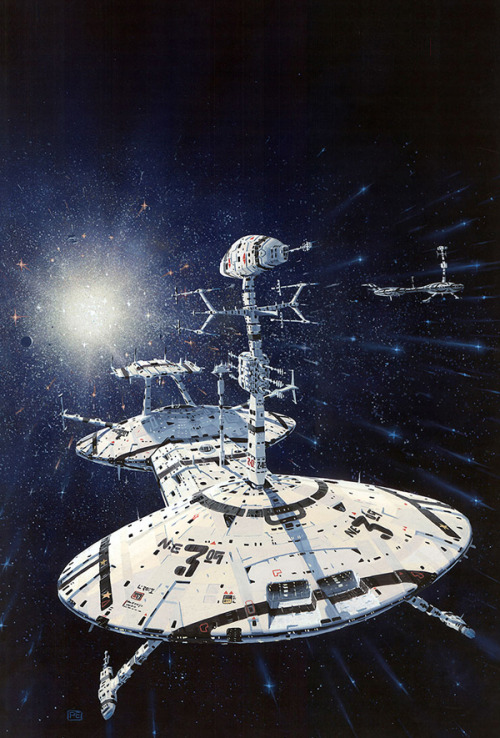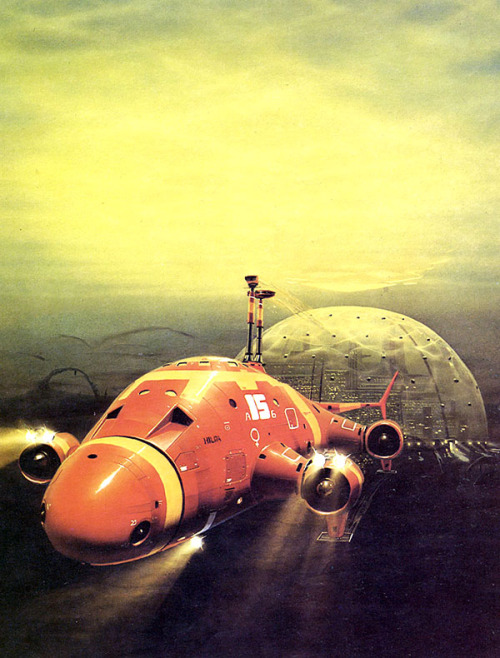Stephen Youll





Stephen Youll
More Posts from Oursj-p and Others

2017 October 4
The Soul Nebula in Infrared from Herschel Image Credit & License: ESA, Herschel Space Obs., NASA, JPL-Caltech
Explanation: Stars are forming in the Soul of the Queen of Aethopia. More specifically, a large star forming region called the Soul Nebula can be found in the direction of the constellation Cassiopeia, who Greek mythology credits as the vain wife of a King who long ago ruled lands surrounding the upper Nile river. The Soul Nebula houses several open clusters of stars, a large radio source known as W5, and huge evacuated bubbles formed by the winds of young massive stars. Located about 6,500 light years away, the Soul Nebula spans about 100 light years and is usually imaged next to its celestial neighbor the Heart Nebula (IC 1805). The featured image, impressively detailed, was taken last month in several bands of infrared light by the orbiting Herschel Space Observatory.
∞ Source: apod.nasa.gov/apod/ap171004.html




Sci-fi + drinks

At the disused WWII Battlement at Godley Head, Christchurch, New Zealand
js





Peter Elson
The Daredevil Spacecraft That Will Touch the Sun
In the summer of 2018, we’re launching Parker Solar Probe, a spacecraft that will get closer to the Sun than any other in human history.

Parker Solar Probe will fly directly through the Sun’s atmosphere, called the corona. Getting better measurements of this region is key to understanding our Sun. For instance, the Sun releases a constant outflow of solar material, called the solar wind. We think the corona is where this solar wind is accelerated out into the solar system, and Parker Solar Probe’s measurements should help us pinpoint how that happens.

The solar wind, along with other changing conditions on the Sun and in space, can affect Earth and are collectively known as space weather. Space weather can trigger auroras, create problems with satellites, cause power outages (in extreme cases), and disrupt our communications signals. That’s because space weather interacts with Earth’s upper atmosphere, where signals like radio and GPS travel from place to place.

Parker Solar Probe is named after pioneering physicist Gene Parker. In the 1950s, Parker proposed a number of concepts about how stars — including our Sun — give off energy. He called this cascade of energy the solar wind. Parker also theorized an explanation for the superheated solar atmosphere, the corona, which is hotter than the surface of the Sun itself.

Getting the answers to our questions about the solar wind and the Sun’s energetic particles is only possible by sending a probe right into the furnace of the Sun’s corona, where the spacecraft can reach 2,500 degrees Fahrenheit. Parker Solar Probe and its four suites of instruments – studying magnetic and electric fields, energetic particles, and the solar wind – will be protected from the Sun’s enormous heat by a 4.5-inch-thick carbon-composite heat shield.
Over the course of its seven-year mission, Parker Solar Probe will make two dozen close approaches to the Sun, continuously breaking its own records and sending back unprecedented science data.

Getting close to the Sun is harder than you might think, since the inertia of a spacecraft launched from Earth will naturally carry it in repeated orbits on roughly the same path. To nudge the orbit closer to the Sun on successive trips, Parker Solar Probe will use Venus’ gravity.
This is a technique called a gravity assist, and it’s been used by Voyager, Cassini, and OSIRIS-REx, among other missions. Though most missions use gravity assists to speed up, Parker Solar Probe is using Venus’ gravity to slow down. This will let the spacecraft fall deeper into the Sun’s gravity and get closer to our star than any other spacecraft in human history.

Get a behind-the-scenes view of the Parker Solar Probe under construction in a clean room on the NASA Sun Science Facebook page.

Keep up with all the latest on Parker Solar Probe at nasa.gov/solarprobe or on Twitter @NASASun.
Make sure to follow us on Tumblr for your regular dose of space: http://nasa.tumblr.com.

Découvrez le Tweet de @futurasciences : https://twitter.com/futurasciences/status/1109560554824351745?s=09

Nebula Images: http://nebulaimages.com Astronomy articles: http://astronomyisawesome.com
#astronomy #apod #space #nasa
-
 daisy-the-dorky-dog liked this · 8 months ago
daisy-the-dorky-dog liked this · 8 months ago -
 meisterabababa reblogged this · 1 year ago
meisterabababa reblogged this · 1 year ago -
 jordanationalismtion liked this · 1 year ago
jordanationalismtion liked this · 1 year ago -
 terrific-togekiss reblogged this · 1 year ago
terrific-togekiss reblogged this · 1 year ago -
 terrific-togekiss liked this · 1 year ago
terrific-togekiss liked this · 1 year ago -
 illuminfae-ix liked this · 1 year ago
illuminfae-ix liked this · 1 year ago -
 mantis-mcq liked this · 1 year ago
mantis-mcq liked this · 1 year ago -
 ask-khan-the-skecktal-overlord liked this · 3 years ago
ask-khan-the-skecktal-overlord liked this · 3 years ago -
 spaceoperasoftscifi reblogged this · 3 years ago
spaceoperasoftscifi reblogged this · 3 years ago -
 luvtxt liked this · 4 years ago
luvtxt liked this · 4 years ago -
 niiue reblogged this · 4 years ago
niiue reblogged this · 4 years ago -
 lwprpductions reblogged this · 4 years ago
lwprpductions reblogged this · 4 years ago -
 lwprpductions liked this · 4 years ago
lwprpductions liked this · 4 years ago -
 quiet360 liked this · 4 years ago
quiet360 liked this · 4 years ago -
 niiue reblogged this · 4 years ago
niiue reblogged this · 4 years ago -
 thevoiceofmadness liked this · 4 years ago
thevoiceofmadness liked this · 4 years ago -
 deconstroy reblogged this · 4 years ago
deconstroy reblogged this · 4 years ago -
 wagonlitcommunitytheatregroup liked this · 4 years ago
wagonlitcommunitytheatregroup liked this · 4 years ago -
 1helios1 liked this · 4 years ago
1helios1 liked this · 4 years ago -
 todesengel1984 liked this · 4 years ago
todesengel1984 liked this · 4 years ago -
 spermproducingparasiteblog reblogged this · 4 years ago
spermproducingparasiteblog reblogged this · 4 years ago -
 scabbers9 reblogged this · 4 years ago
scabbers9 reblogged this · 4 years ago -
 thebloodthirstyavatar reblogged this · 4 years ago
thebloodthirstyavatar reblogged this · 4 years ago -
 the-pornographer liked this · 4 years ago
the-pornographer liked this · 4 years ago -
 miscalculating-entity liked this · 4 years ago
miscalculating-entity liked this · 4 years ago -
 tammenterskanroskalava reblogged this · 4 years ago
tammenterskanroskalava reblogged this · 4 years ago -
 tammenterhoh liked this · 4 years ago
tammenterhoh liked this · 4 years ago -
 thebloodthirstyavatar reblogged this · 4 years ago
thebloodthirstyavatar reblogged this · 4 years ago -
 brassrobo liked this · 4 years ago
brassrobo liked this · 4 years ago -
 orbturner liked this · 4 years ago
orbturner liked this · 4 years ago -
 vertigo-seg reblogged this · 4 years ago
vertigo-seg reblogged this · 4 years ago -
 ironworthstriking reblogged this · 4 years ago
ironworthstriking reblogged this · 4 years ago -
 cheezbot liked this · 4 years ago
cheezbot liked this · 4 years ago -
 trashymedes reblogged this · 4 years ago
trashymedes reblogged this · 4 years ago -
 aspoopalypse liked this · 4 years ago
aspoopalypse liked this · 4 years ago -
 noah-greer liked this · 4 years ago
noah-greer liked this · 4 years ago -
 ichbinein-berliner liked this · 4 years ago
ichbinein-berliner liked this · 4 years ago -
 most-serene-froge reblogged this · 4 years ago
most-serene-froge reblogged this · 4 years ago